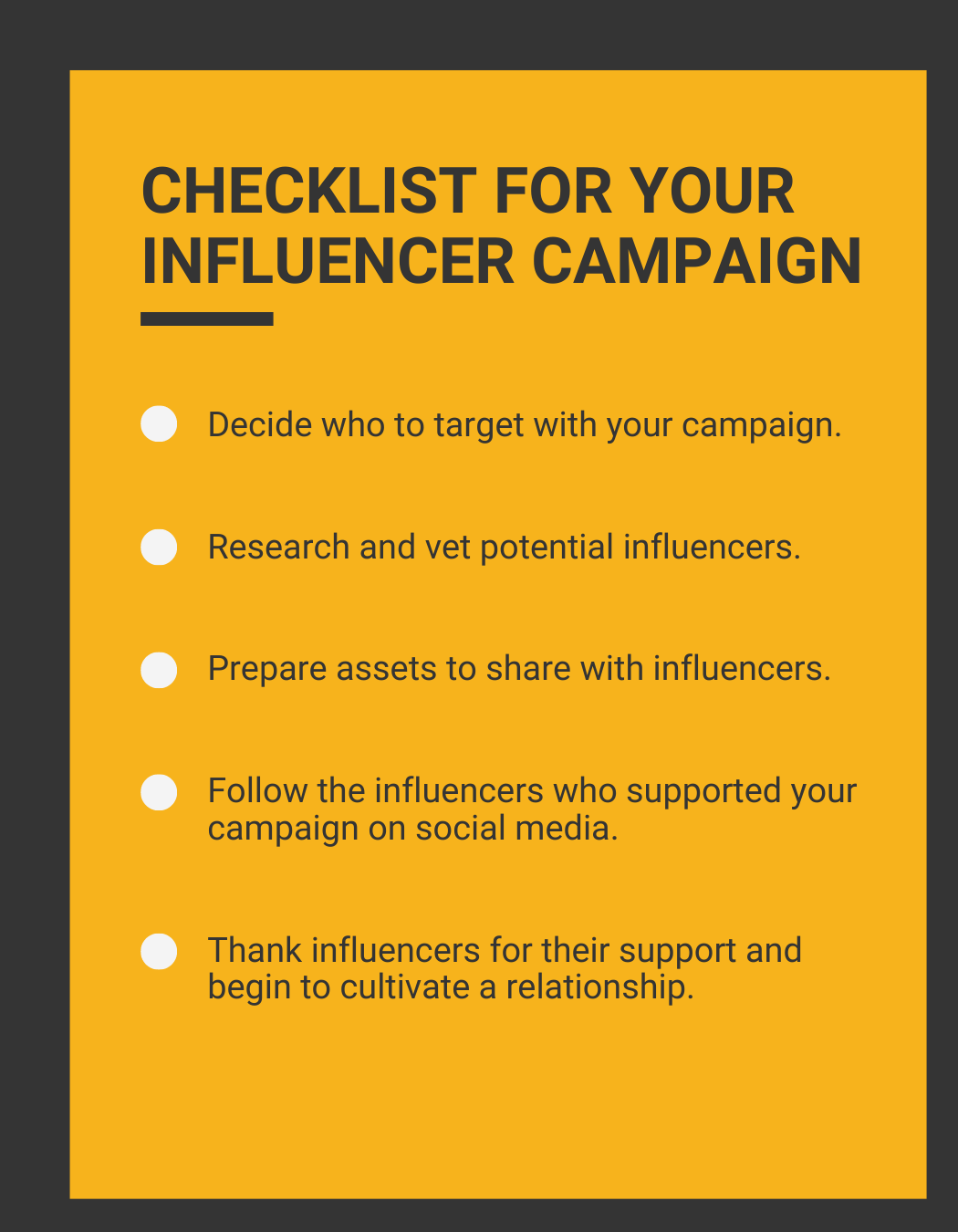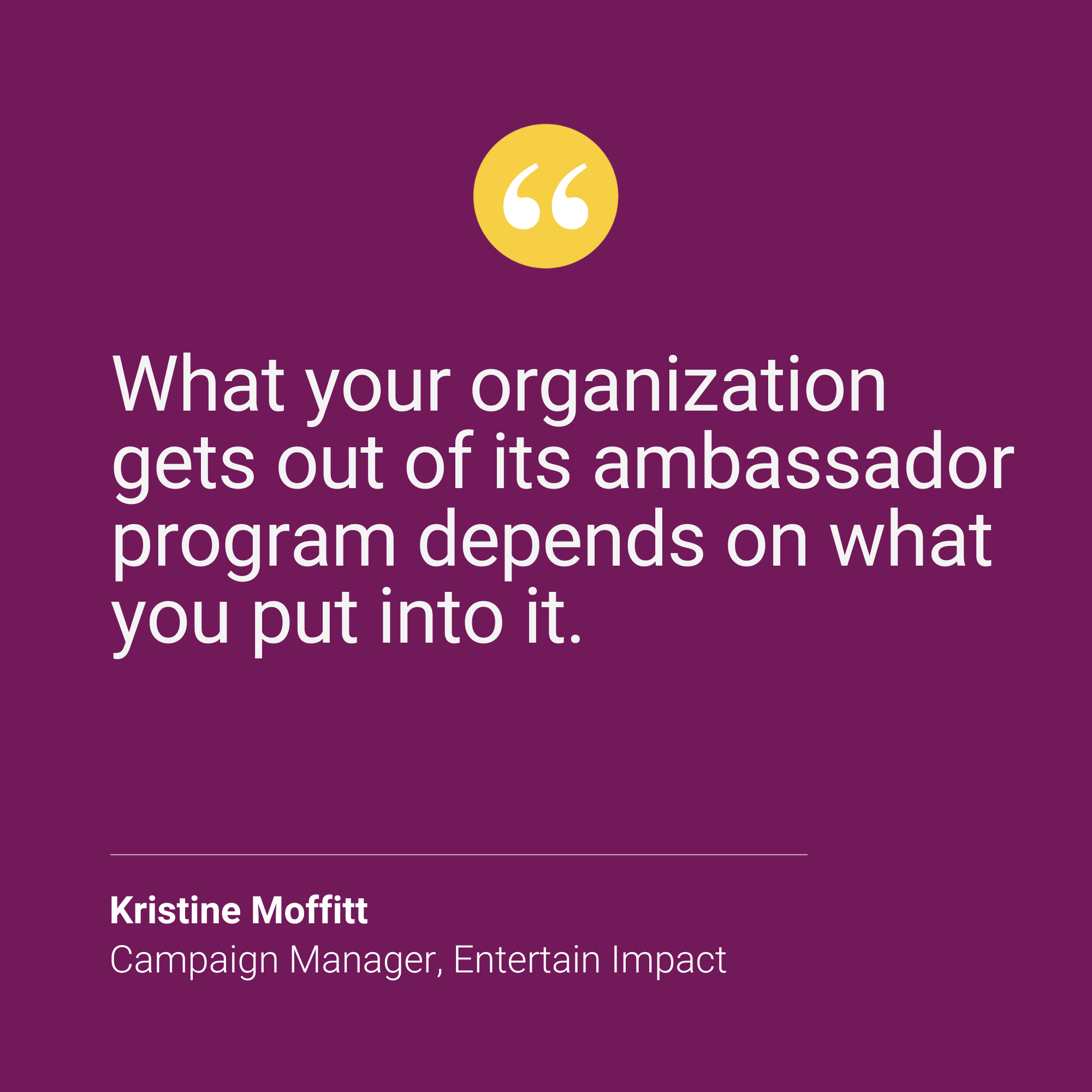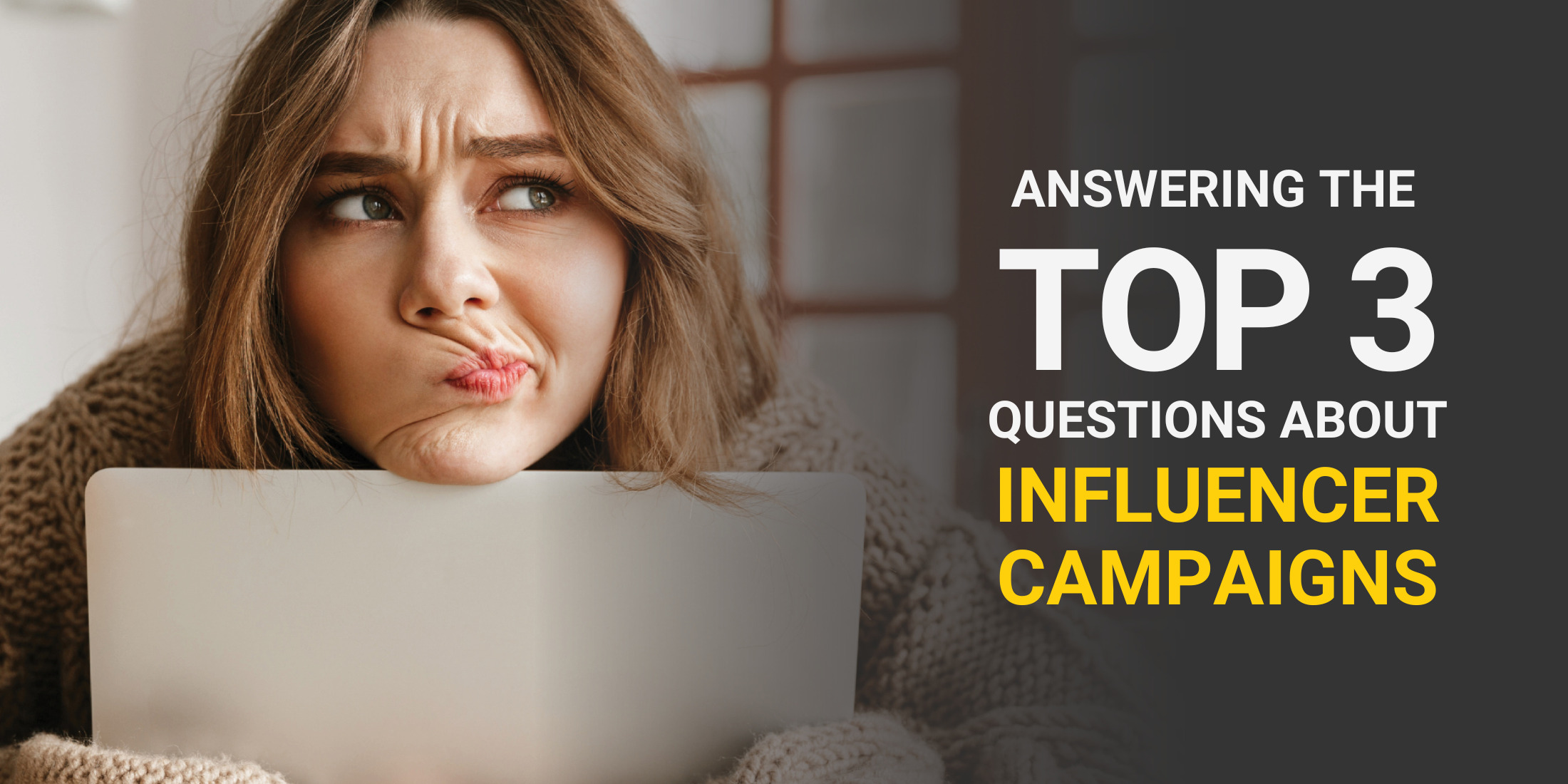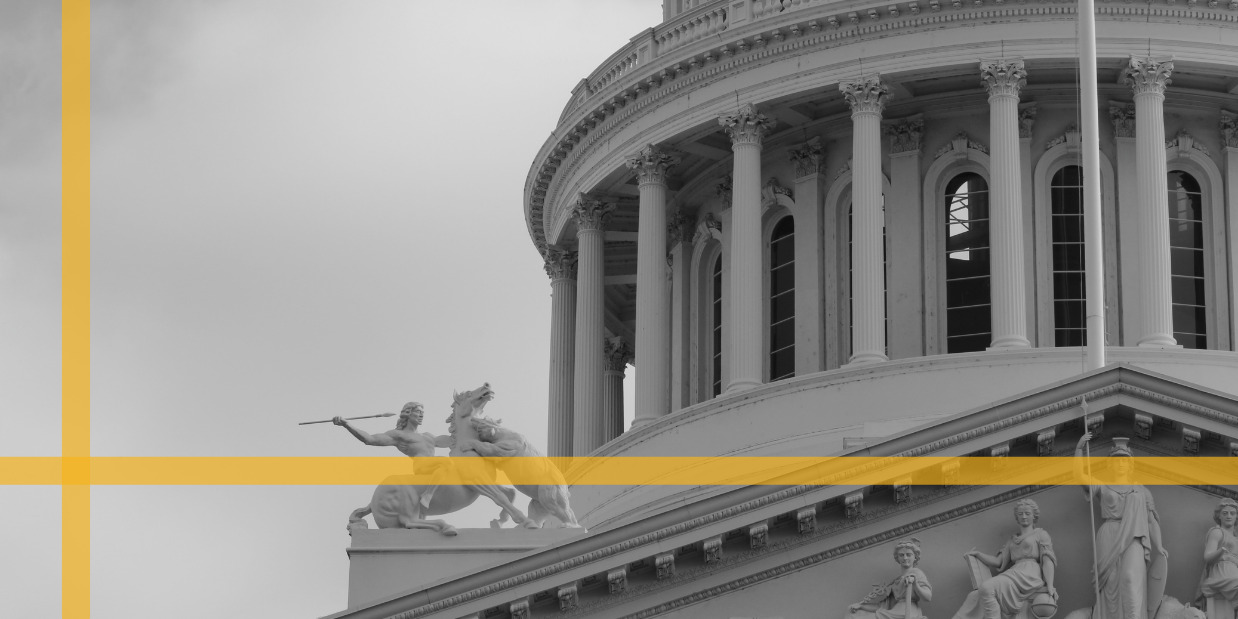Influencer marketing campaigns can be a lot for any leader to get off the ground, from securing board approval and internal buy-in to figuring out how to plan and measure it all. It’s natural to have questions. As the agency that has pioneered the field of cause influence over the past 15+ years, we’ve got answers. Here are the three most common questions we hear from clients about influencer marketing campaigns. If you have a question that we don’t cover, don’t hesitate to reach out to Entertain Impact’s team.
1. Should I use an ambassador program to reach younger audiences or to engage my existing donor base, which skews older?
At the heart of any influencer campaign is the idea that you’re leveraging your influencer’s platform to reach a specific audience. Ambassadors can be effective at driving awareness en masse or among specific audience segments. That means integrating cause influence into your communications strategy can introduce your cause to new audiences. Depending on the celebrities you choose, though, your ambassador program can also be used to affirm the giving decisions of existing donors.
We’re past the time when creating a digital campaign signified an inherent focus on younger audiences. 85% of Baby Boomers are online and roughly 70% are active on Facebook. So influencer campaigns are well-suited to reach people of all ages. Which demographic your influencer marketing campaign reaches will depend largely on the social platform and public figure you choose.
Having said that, we often advise clients to focus the majority of their influencer marketing efforts to engage new audiences with whom they can begin to forge deeper connections.

When a public figure uses their platform to elevate your organization, your nonprofit’s work is automatically brought to the attention of that individual’s followers with an implicit nod of support. This is where you stand to realize the greatest amount of growth in terms of followers, subscribers, site visitors, and prospective donors. Sure, you can use ambassador programs for the cultivation and stewardship of current supporters, but chances are that you already have other means of communicating with those people.
2. How far in advance should I start reaching out to celebrities and influencers for my campaign?

Generally, you want to develop a cause influence strategy at least three months prior to your campaign launch.
You need time to align on which communications goals can be advanced effectively through an influencer marketing campaign. An ambassador program will rarely hit all your communications goals, so focus is key! You’ll also need to prioritize target audiences and conduct a thorough research process to identify, evaluate, and vet ambassadors. Invitation materials and communications will need to be created as well. Anticipate questions and a need for specifics from these folks.
If you’re looking to engage high-profile celebrities, expect their calendars to book out in advance. That means, you need to respect their time. It also means you need to build in time for a few rounds of outreach and follow-up.
3. How can our team own the relationships generated from our influencer campaigns?
It’s up to you! If your team has the capacity to maintain these relationships, you should take them on. The reality is, most nonprofits don’t have the bandwidth, so they rely on us to handle all aspects of communication and relationship management with celebrities and influencers. However, there are a few easy things you can start to do internally.
At a minimum, be sure your organization and its leaders follow the influencer who supported your campaign on social media. Engage with their posts. It may sound obvious, but it often gets missed. Beyond that, welcome them to your organization and thank them for their support, similar to how you would any major donor.
Next, be mindful of the important people who facilitated the engagement on your behalf. If your campaign received support from a high-profile celebrity, it was likely the doing of that person’s manager or publicist. Be sure to thank them as well! Make them remember your organization as one that is easy to work with, respectful of their time, and grateful for their support. They will be your biggest allies going forward.
This article was written by Kristine Moffitt, and was originally published on Entertain Impact.





